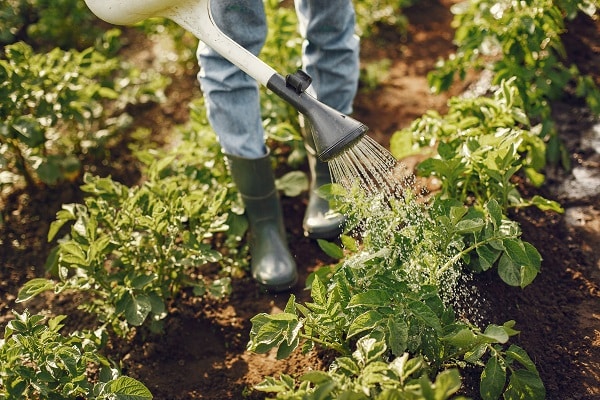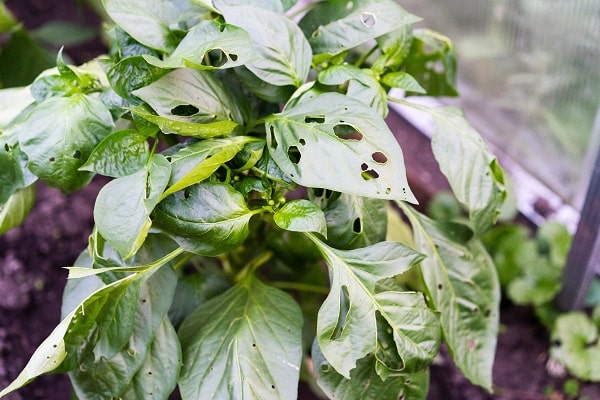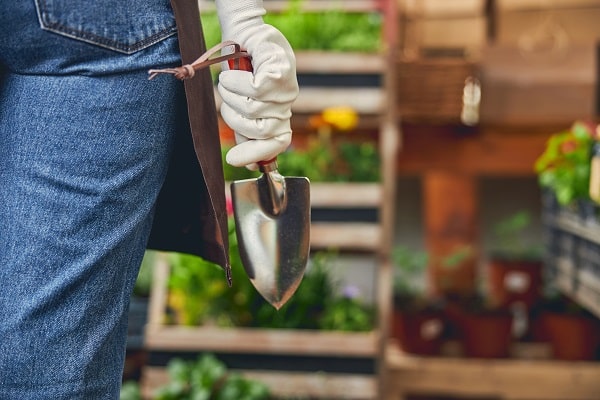For many people, their garden is a place to relax and enjoy the outdoors, whether it’s tending to their flowers or vegetables or just sitting back and enjoying the view. And while most gardeners know you can do many things to make your garden look great, you should also avoid some things. This post will discuss ten things you should never do in your garden. These simple tips can help keep your garden looking beautiful for years to come!
Contents
- 1 Give Your Plants Too Much Water
- 2 Overcrowd Your Plants
- 3 Plant At The Wrong Time
- 4 Ignore The Weeds Growing
- 5 Not Test The Soil
- 6 Use Too Much Fertilizer
- 7 Compost The Wrong Stuff
- 8 Let Pests Run Wild
- 9 Use The Wrong Tool For The Job
- 10 Not Give Your Plants Proper Support
- 11 Avoid These Common Mistakes In Your Garden!
Give Your Plants Too Much Water
Every gardener knows that water is essential for plant life. However, giving your garden too much of a good thing is possible. When plants receive too much water, their roots are unable to access the oxygen they need to grow. As a result, the plants may become stunted or even die. Too much water can also encourage the growth of mold and mildew, leading to disease.
In addition, overwatered plants are more susceptible to pests and problems such as root rot. For these reasons, it is important to only water your garden when necessary. Letting the soil dry out between watering will help to ensure that your plants stay healthy and thrive.
Overcrowd Your Plants
When it comes to gardening, there are a few golden rules that everyone should follow. One of the most important is never to overcrowd your plants. When plants are too close together, they compete for resources like sunlight and water. This can lead to stunted growth, yellowing leaves, and weak stems.
Furthermore, overcrowded plants are more susceptible to pests and diseases. So, when you’re planning your garden, be sure to give your plants plenty of room to grow. By following this simple rule, you’ll be on your way to a healthy and thriving garden.
Plant At The Wrong Time
Planting at the wrong time can be disastrous for your garden. Not only will the plants be more susceptible to disease and pests, but they may also fail to flower or produce fruit. Occasionally, planting at the wrong time can even kill the plant. To avoid these problems, it is essential to carefully consider the best time to plant each type of crop.
Before planting most vegetables, you should generally wait until the danger of frost has passed and the soil has warmed up sufficiently. Some crops, such as peas and spinach, can be planted a little earlier, while others, such as tomatoes and peppers, should be planted later in the season.
Ignore The Weeds Growing
If you have been growing a garden for many years, you know weeds can quickly take over a garden if left unchecked. Not only do they compete with plants for resources like sunlight and water, but they can also harbor diseases that can spread to other plants. Weeds can also reseed themselves very quickly, making them difficult to eliminate completely. However, ignoring the weeds in your garden is not the best solution.
If they are left to grow unchecked, they will eventually crowd out your other plants and make it difficult to maintain a healthy garden. Instead, it is crucial to take steps to control the weed population in your garden. This may involve manually removing weeds, using herbicides, or planting ground cover to prevent weeds from taking root.
Not Test The Soil
Before you plant anything in your garden, it is vital to test the soil. This will give you an idea of the nutrients that are available to your plants, as well as the pH level. The pH level is especially important, as it can affect how well your plants are able to uptake nutrients. Most plants prefer slightly acidic soil, with a pH level between 6 and 7.
If the pH level is too high or too low, you may need to amend the soil before planting. Testing the soil is a simple process, and there are kits available at most garden stores. By taking the time to test your soil, you can ensure that your plants will have everything they need to thrive.
Use Too Much Fertilizer
When it comes to fertilizer, more is not always better. In fact, using too much fertilizer can actually damage your plants. Overfertilization can cause the leaves to burn, the roots to rot, and the plant to become more susceptible to disease. Additionally, excess fertilizer can run off into nearby waterways, causing environmental damage.
So how much fertilizer should you use? The answer depends on the type of plants you are growing and the time of year. For most plants, a little bit of fertilizer goes a long way. Once you have determined the right amount of fertilizer for your plants, be sure to stick to that amount and avoid overdoing it. Your plants will thank you for it!
Compost The Wrong Stuff
Gardeners have long been composting organic waste to provide a nutrient-rich soil amendment for their gardens. However, not all organic materials are suitable for composting. Some materials, such as meat and dairy products, can attract rodents and other pests, while others, such as diseased plants, can spread diseases to healthy plants.
In addition, some materials, such as treated lumber and plastics, can release harmful chemicals into the soil. As a result, it is important to be selective about what you include in your compost pile. By following these guidelines, you can be sure that your compost will be safe and effective.
Let Pests Run Wild
A garden is a beautiful thing. It’s a place where you can go to relax, to escape the hustle and bustle of everyday life. But gardens can also be delicate places, vulnerable to all sorts of pests. From aphids to Zimmerman moths, pests can quickly destroy the hard work you’ve put into your garden. That’s why it’s essential never to let pests run wild in your garden. The best way to do this is to be proactive.
Inspect your plants regularly for signs of infestation; if you see any, don’t hesitate to take action. Whether it’s using a biological control like ladybugs or picking off aphids by hand, getting rid of pests before they have a chance to multiply is essential for keeping your garden healthy and beautiful.
Use The Wrong Tool For The Job
Gardening is a task that requires the use of many different tools. From spades and hoes to rakes and pruners, each tool has a specific purpose. As a result, it is crucial to use the right tool for the job in order to achieve the best results. Conversely, using the wrong tool can not only be inefficient, but it can also damage plants or cause injury.
For example, using a shovel to dig up small weeds is likely to damage the roots of nearby plants. Similarly, using pruning shears to cut through thick branches can lead to cuts and scratches. However, by choosing the appropriate tool, gardeners can avoid these problems and create a healthy garden.
Not Give Your Plants Proper Support
A well-tended garden is a beautiful sight. But behind every stunning display of flowers and foliage is a solid foundation of plant support. Stakes, trellises, and cages provide essential structures for plants, reducing the risk of damage from wind, rain, and pests. Without this support, plants are more likely to succumb to disease and stress.
In addition, poorly supported plants are more likely to produce inferior flowers and fruits. So if you want your garden to reach its full potential, make sure to give your plants the support they need.
Avoid These Common Mistakes In Your Garden!
Gardening is a rewarding hobby but requires time, effort, and knowledge. By following these tips, you can avoid common mistakes and create a stunning garden that will be the envy of your neighbors. If you still feel like you could use some extra help, don’t hesitate to reach out to a professional and your local gardening center or nursery. With their help, you can transform your garden into a truly remarkable space!









